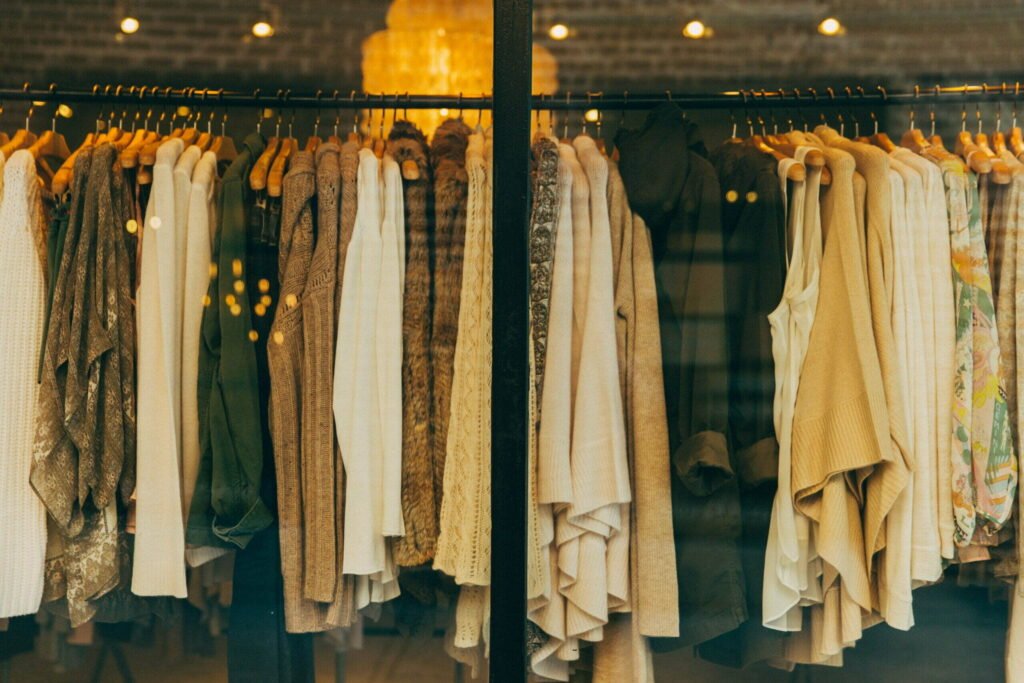

What is a Circular Economy (And Why Most Businesses Are Getting It Wrong)

As Seen On
Let’s be honest: Most businesses claiming to be “circular” are just greenwashing their way through PR campaigns.
Here’s a reality check: Only 7.2% of the global economy is circular. That means over 90% of the stuff we make, use, and throw away follows the same old linear “take-make-waste” model we’ve used since the Industrial Revolution. It’s like we’re all nodding along to the sustainability symphony while marching to the beat of a very different drum.
But here’s the thing – this isn’t another feel-good article about saving the planet. It is about why most businesses are getting the circular economy completely wrong and, more importantly, why fixing those mistakes could be the biggest market opportunity of the century. But firs let’s figure out what is a circular economy.

What is a Circular Economy?
A circular economy is an economic model that eliminates waste and maximizes resource use through three core principles: reduce, reuse, and recycle. Unlike our current “take-make-dispose” approach, it’s about keeping products and materials in use for as long as possible.
The Circle of Lies: What Everyone Gets Wrong
Let’s start with the most popular delusion: recycling will save us all. Spoiler alert: it won’t.
Here’s a number that should keep you up at night: 91% of plastic isn’t recycled. Let that sink in. Were we spending all those conscientious hours sorting your recyclables? Most of it’s probably sitting in a landfill somewhere, having a nice long chat with the rest of our “recycled” waste.
However, the problem goes deeper than just failed recycling programs. Companies love to talk about their circular initiatives, but most are just putting Band-Aids on bullet wounds. They’re like someone trying to lose weight by buying smaller plates while continuing to eat junk food – it might look better, but it’s not solving the actual problem.
Common circular economy myths businesses keep falling for:
- Myth #1: Technology will save us
- Myth #2: Consumers will pay more for sustainable products
- Myth #3: Small changes add up to big impacts
- Myth #4: We can recycle our way to sustainability
Most circular economy initiatives fail because they’re built on false assumptions. It’s time to get real about what works and what doesn’t.
Why Should You Care?
The scale of our resource consumption presents an urgent global challenge. According to the latest data, humanity consumes resources at 1.7 times the Earth’s regenerative capacity. It means we’re depleting resources faster than nature can replenish them, creating an unsustainable deficit that grows larger each year.
The numbers tell a stark story. Global material extraction has tripled in the past five decades, jumping from 30 to 106 billion tonnes. On an individual level, this translates to an increase from 23 to 39 kilograms of materials used per person per day.
The inequality in resource consumption is particularly striking:
- High-income countries use six times more resources than low-income nations
- They generate ten times more climate impacts
- Upper middle-income countries have doubled their resource use in just 50 years
Material extraction is projected to rise by 60% by 2060. This trajectory threatens our climate, biodiversity targets, economic prosperity, and well-being. Resource extraction and processing currently account for:
- Over 60% of planet-warming emissions
- 40% of health-related impacts from air pollution
Without immediate action to change our consumption patterns, we’re heading toward a future requiring three planets’ worth of resources by 2050. The sobering reality is that we only have one Earth, pushing it to its limits.
The Real Problem (It’s Not What You Think)
Here’s where it gets interesting: The biggest barrier to creating a circular economy isn’t technological – it’s psychological.
We’re trying to solve a circular problem with linear thinking. It’s like trying to fit a square peg in a round hole, except the peg is our entire economic system, and the hole is the future of our planet. No pressure.
The data tells an interesting story: While 66% of consumers say they’re willing to pay more for sustainable products, only about 26% do. Why? Because we’re fighting against decades of ingrained behaviours and systems designed for linear consumption.
But there’s an even bigger issue: The Rebound Effect. We often consume more, not less, when we make processes more efficient. It’s like buying an energy-efficient air conditioner and then running it all the time because “it’s efficient.” The net result? More energy consumption, not less.
The Business Case for Getting Real
Now for the part you’ve been waiting for: the money.
The circular economy isn’t just about saving the planet – it’s about saving your business. By 2030, circular economy opportunities could unlock $4.5 trillion in economic benefits. That’s not a typo.
Companies that are doing it right aren’t just tinkering around the edges – they’re fundamentally rethinking their business models. Take Philips, for example. They’ve moved from selling light bulbs to selling “light as a service.” Instead of pushing more products, they create ongoing revenue streams while reducing waste.
The real ROI comes from three key areas:
- Resource efficiency and cost savings
- New revenue streams from service-based models
- Market differentiation and brand value
But here’s the catch: You must be willing to cannibalize your business before someone else does it for you.
The Counterintuitive Path Forward
Ready for some uncomfortable truths? Sometimes, the path to circularity means doing things that seem completely counterintuitive.
For example:
- Sometimes less efficiency is better (if it leads to more durability)
- Constraints often drive innovation better than abundance
- The best circular solutions often look nothing like their linear predecessors
The most successful circular businesses don’t just tweak existing models—they completely reimagine what their industry could be.
Consider these examples:
- Instead of selling furniture, rent it and maintain ownership of the materials
- Rather than pushing for more sales, focus on extending product life
- Instead of competing on price, compete on longevity and repairability
Making It Work: Beyond the Buzzwords
Let’s get practical. Here’s how to actually implement circular principles in your business:
Rethink Your Business Model
- Move from products to services
- Create take-back programs
- Develop reverse logistics capabilities
Rethink Your Business Model
- Move from products to services
- Create take-back programs
- Develop reverse logistics capabilities
Build the Right Partnerships
- No company can be circular alone
- Find partners who complement your waste streams
- Create shared value networks
Common pitfalls to avoid:
- Don’t just focus on end-of-life solutions
- Avoid superficial changes that look good but achieve little
- Don’t wait for perfect solutions – start with what you can do now
The Hard Truth About Change
Here’s the reality check you need to hear: Transforming to a circular economy is hard. Really hard. It’s going to take years, not months. It will require fundamental changes to your business model. And yes, it might hurt your short-term profits.
But here’s the other truth: You don’t have a choice. The linear economy is dying. Resources are getting scarcer, regulations are getting stricter, and consumers are getting smarter.
The question isn’t whether to transition to a circular economy—it’s how fast you can do it before your competitors do it first.
What Now?
If you’re feeling overwhelmed, that’s good. That means you’re starting to understand the scale of the challenge—and the opportunity—ahead of us.
Here’s what you can do right now:
- Audit your current business model for circular opportunities
- Identify your biggest waste streams and see them as resources
- Start small, but think big
- Find partners who share your vision
- Begin educating your team about circular principles
The circular economy isn’t just another sustainability trend – it’s the future of business. And while most companies are still getting it wrong, you now have the insights to get it right.
The only question is: Are you ready to close the loop?
Want to learn more about how your business can successfully transition to a circular economy? Let’s talk about creating a strategy that works for your specific situation.
Frequently Asked Questions:
Is the circular economy just about recycling?
How does it affect jobs?
Studies show positive employment effects, particularly in the recycling and remanufacturing sectors.
Can small businesses participate?
Absolutely! Small businesses can often implement circular principles more quickly than larger corporations.
Gracie Jones
Up until working with Casey, we had only had poor to mediocre experiences outsourcing work to agencies. Casey & the team at CJ&CO are the exception to the rule.
Communication was beyond great, his understanding of our vision was phenomenal, and instead of needing babysitting like the other agencies we worked with, he was not only completely dependable but also gave us sound suggestions on how to get better results, at the risk of us not needing him for the initial job we requested (absolute gem).
This has truly been the first time we worked with someone outside of our business that quickly grasped our vision, and that I could completely forget about and would still deliver above expectations.
I honestly can’t wait to work in many more projects together!
Disclaimer
*The information this blog provides is for general informational purposes only and is not intended as financial or professional advice. The information may not reflect current developments and may be changed or updated without notice. Any opinions expressed on this blog are the author’s own and do not necessarily reflect the views of the author’s employer or any other organization. You should not act or rely on any information contained in this blog without first seeking the advice of a professional. No representation or warranty, express or implied, is made as to the accuracy or completeness of the information contained in this blog. The author and affiliated parties assume no liability for any errors or omissions.

